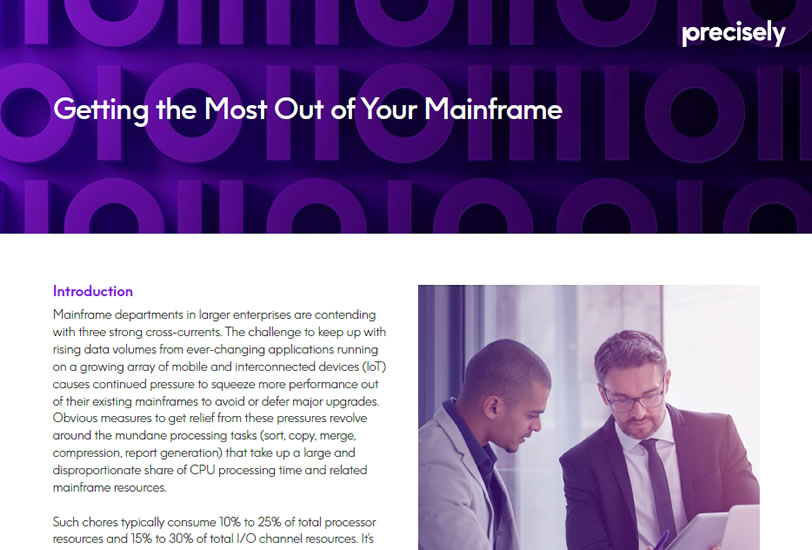White Paper
Getting the Most Out of Your Mainframe
Offload, accelerate and lower cost of your mainframe
As fast as the mobile economy and Internet of Things (IoT) are growing, the innovations to accommodate them in the mainframe realm are keeping pace. It’s all about offloading, acceleration and moving the more mundane housekeeping chores off the primary CPU and processing them faster and at lower costs elsewhere.
Proven, high-performance accelerators are readily at-hand for the most resource-intensive parts of applications running on z/OS. And they effectively upgrade the mainframe environment without breaking an organization’s IT budget.
Download this white paper to learn more about how to offload, accelerate and lower cost while leaving the primary CPU with more headroom for the organization’s core business applications.
The Hardware Piece
IBM’s approach to these challenges has been to offer “specialty engines.” These are essentially spare CPUs that already reside on the mainframe though in a deactivated state – but are then activated under different licensing arrangement to handle only specified workload types.
Those workloads can then be offloaded from the primary CPU to the specialty engine, freeing up the primary CPU to do more work, faster and on core enterprise applications such as OLTP, batch and ERP. There are associated costs attached to the specialty engines, but they are one-time costs, whereas processing times on the primary CPU are subject to IBM’s usage-based licensing fees – which are substantial and ongoing.
IBM’s first specialty engine was introduced in 2004 and was named the z Application Assist Processor (zAAP) which was limited to running only certain Java and XML. Additionally, the Integrated Facility for Linux (IFL) processor was limited to running applications written for Linux.
Later, IBM introduced the z Integrated Information Processor (zIIP), which was assigned to handle not only Db2 workloads, but also the Java and XML workloads that were formerly directed to the zAAP. It didn’t take long for third-party vendors to design tools and utilities that took the performance of IBM’s zIIP offering to a higher level.
Read this white paper to learn more.
